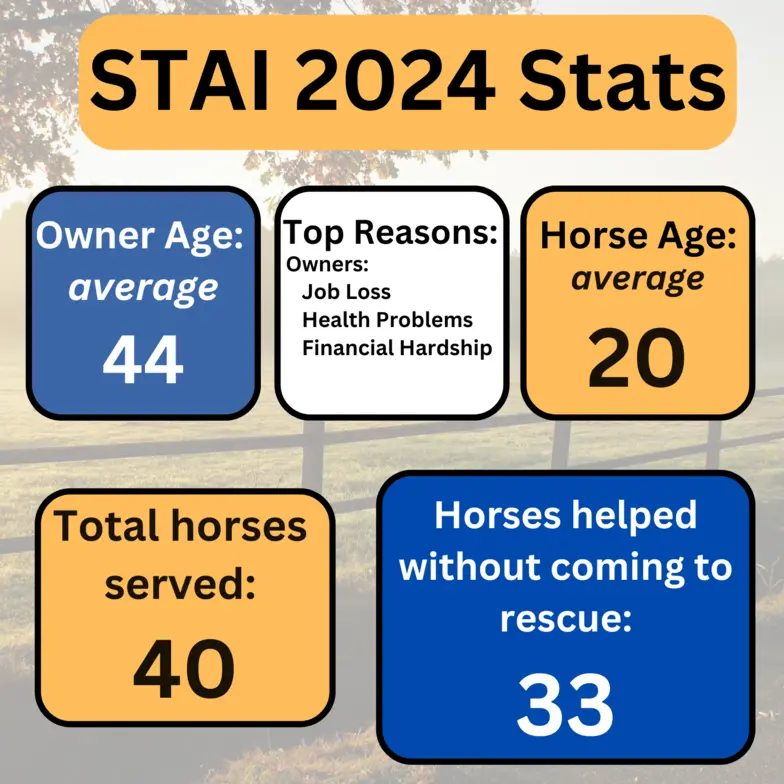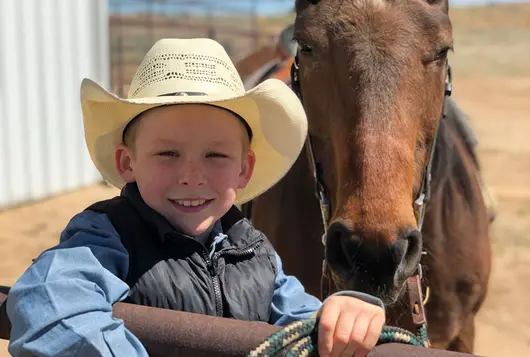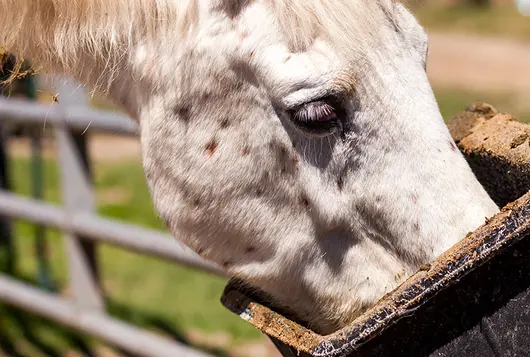They Did It: Helped More Horses by Building a Safety Net Program

Who:
Nicky Walters, Founder and President of West Virginia Horse Network (WVHN)
Did What:
Launched Solutions to Avoid Intake (STAI), a safety net program for equines, in 2022. Safety net programs can help equine organizations increase their community impact by diverting horses from intake and ultimately taking in only those horses who truly need to be relinquished. The programs typically range in offerings from feed assistance to veterinary care, and some organizations even offer training to reduce the number of behavioral relinquishments they receive. Since launching STAI, the program has been directly replicated by another ASPCA Right Horse Partner in Ohio, and several other organizations have taken elements of the program for their own communities.
ASPCApro: What was your inspiration and goal with the STAI program?
Nicky Walters: The idea for STAI was initially sparked by a situation in which a companion horse that was adopted from us was at risk of being returned because her adopter had a temporary hardship. When the situation was brought to my attention by our Adoption Coordinator, I asked if there was anything we could do to support the adopter in the short term to help keep the horse at home. It turned out that the adopter only needed about $75 a month for a couple of months to offset hay and feed costs. We would have spent far more than that to bring the horse back into our care, and it would have left the woman’s other adopted horse without a companion. The horses and humans would both have broken hearts. That case was an “ah-ha” moment for me and was the genesis for looking at ways this same approach could save our rescue money and keep horses safe in their homes.
ASPCApro: What type of safety net services have you been able to provide to your community?
Walters: We help with basic veterinary care, hay, feed, maintenance medications, and euthanasia and disposal. We also offer assistance with farrier care, but that service is rarely utilized.
ASPCApro: How did you build this program?
Walters: The most vital part of this program’s success has been the willingness to be flexible and adjust to the needs that people have. It was a pilot program initially, so it was based on what I anticipated people needing. As we headed into the second year, I compared my expectations to the actual requests and then modified things further as we headed into the third year. I think you can miss out on opportunities to make a difference if you are too rigid.
Additionally, we got our screening procedures in place before launching the program. We found that, like adoption, the conversation-based approach is best. Volunteers serve as case managers and maintain a relationship with the individuals we have assisted. In our third year, we made modifications to how we collect the data and interview questions that our case managers ask to make it easier for me to track what sort of assistance is being requested the most. Solid record keeping, data tracking and flexibility have been essential to building the program.
“When my husband lost his job, we honestly didn’t know how to pay our bills, let alone buy feed and hay for three horses … When I reached out to the rescue to see if they could offer temporary assistance of any kind, they were very quick to get back with me. They listened and let me cry, and they went above and beyond to comfort and offer a solution—one that allowed me to keep all three horses, feed them and buy hay for them. Without that assistance, we couldn’t have possibly been able to do that while fighting to pay our mortgage and utilities. I’m beyond grateful for the West Virginia Horse Network and their caring volunteers.”

ASPCApro: How have you spread the word about the program?
Walters: The program is listed on our website, and we have also done paid social media ads. However, as is often the case, word-of-mouth is the top way that awareness of the program has spread. Our veterinarian, loyal page followers and volunteers all refer people to us.
Additionally, when people send a general inquiry email to the rescue, I review the email and do a preliminary assessment to see if the situation can be addressed through STAI or if it seems like a case where we need to bring the horse to the rescue. Based on that assessment, I either send the information to our volunteer case managers or send it to the volunteer who contacts people needing to surrender. Sometimes things change once we’ve learned more information, but that is the process flow.
ASPCApro: What results have you seen in your community after offering safety net services?
Walters: We have been able to impact far more horses since we started STAI, and we’ve done it without significantly increasing our budget. This is a cost-effective and efficient way to assist more horses. The average total amount spent per horse diverted in 2024 was just $380. That is both less than the average per horse in 2023 and a fraction of the cost the rescue would have faced to intake those horses and care for them until they could be placed in an adoptive home.
Besides making a bigger difference, we have also noticed improved relationships with the community. They see that we sincerely don’t want to “take” their horses away and are instead willing to help them through a rough patch to keep their horses at home.
Over time, I think this program will help to offset the current mindset among more traditional horse owners who have a negative perception of rescue. Changing this perception will help more horses stay safe because people will be more comfortable asking for help.
The value of this program truly cannot be overstated.
We have lots more on this subject:



